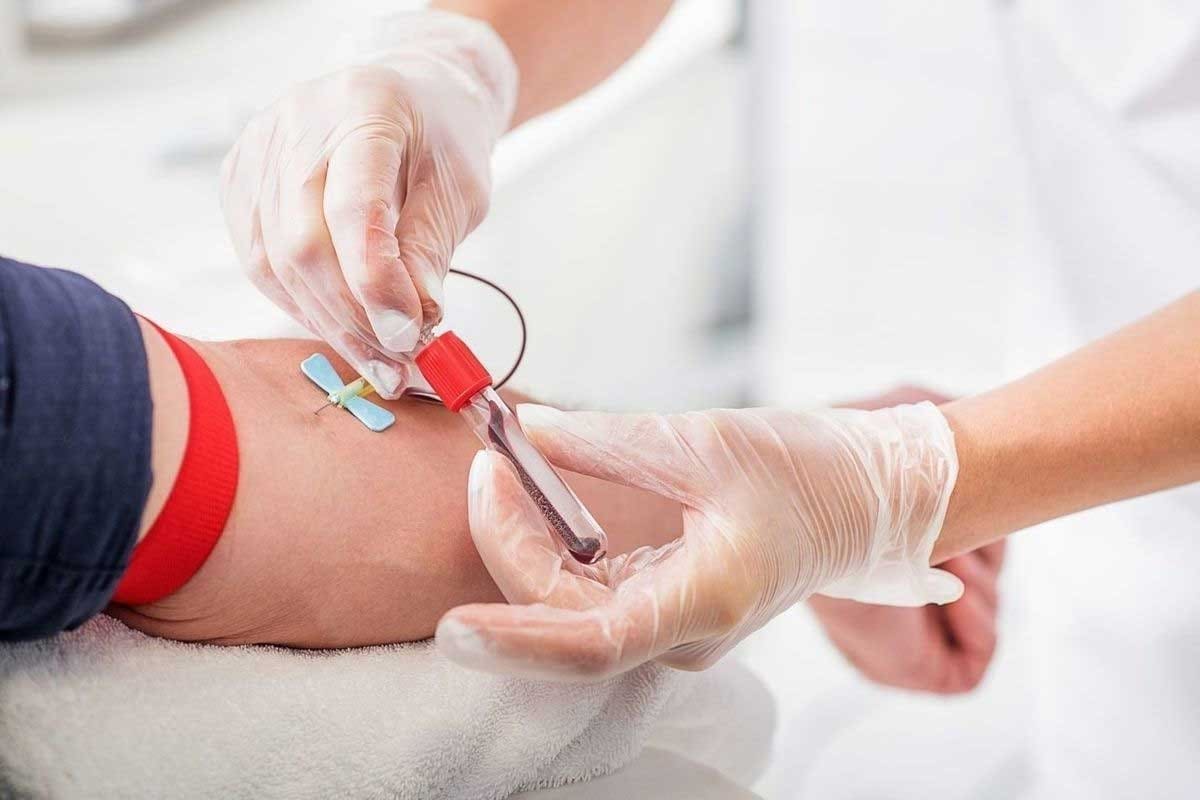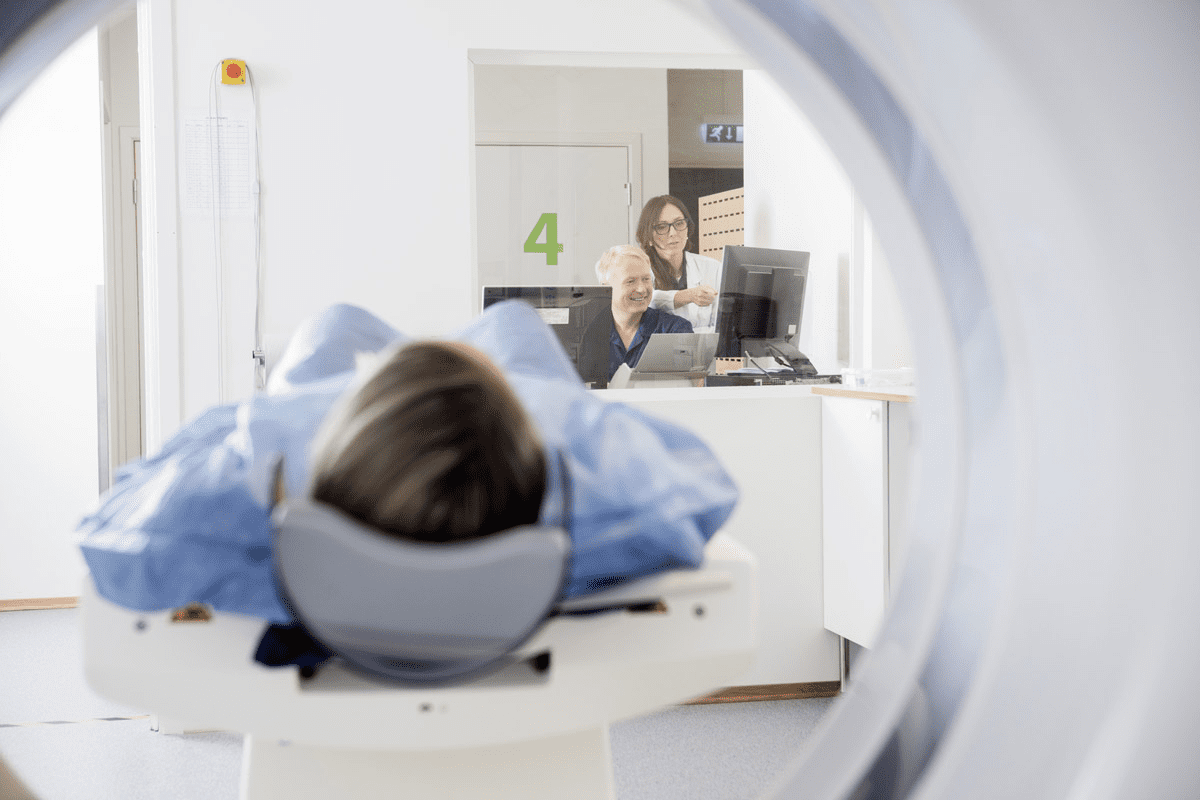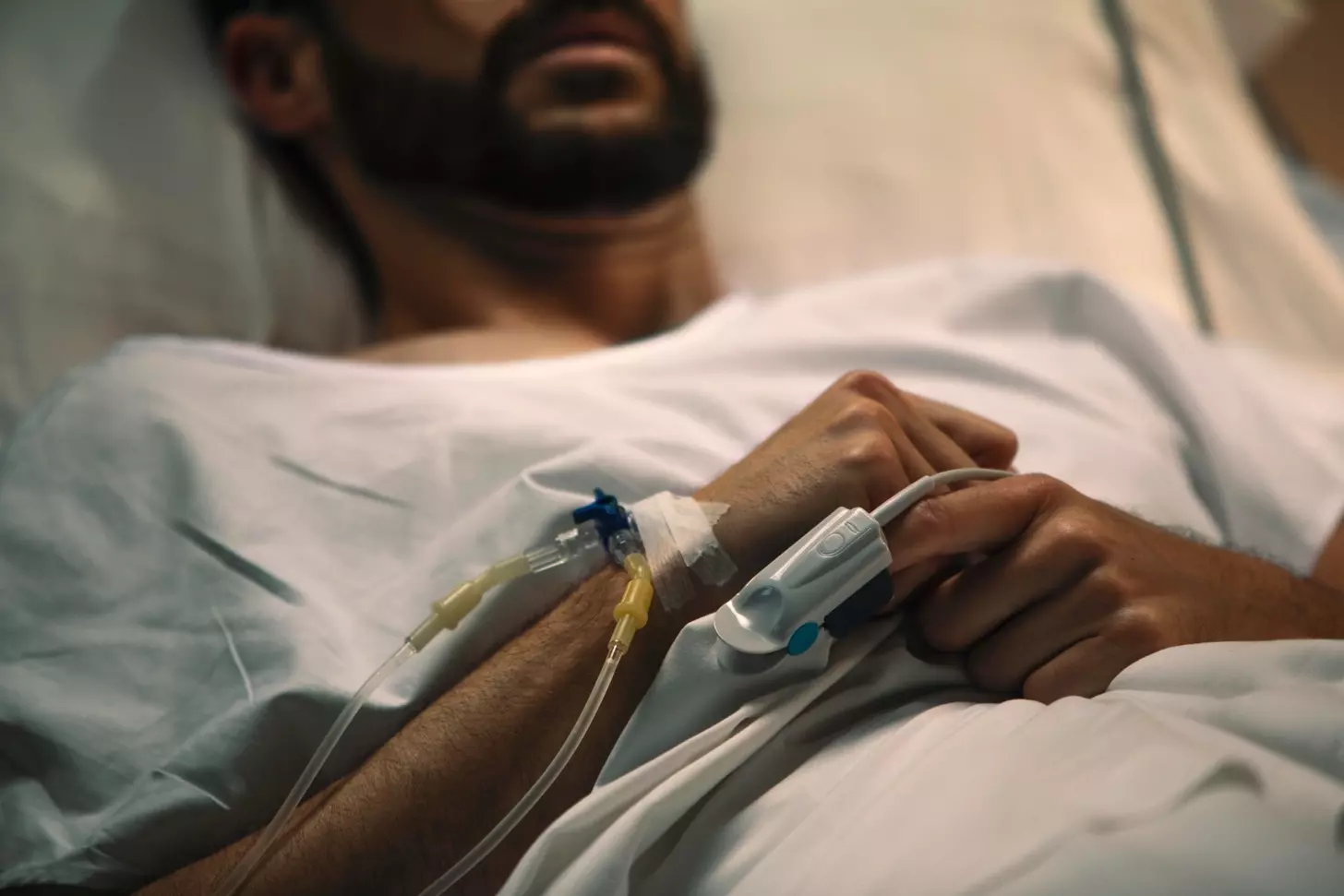Last Updated on November 27, 2025 by Bilal Hasdemir

Chemotherapy is a complex cancer treatment made up of many chemicals designed to stop cancer cells from growing and dividing. So, what is chemo medicine made of? The main ingredients of chemotherapy are alkylating agents, antimetabolites, plant alkaloids, antitumor antibiotics, and corticosteroids. These components work together to inhibit the growth of cancer cells. For example, alkylating agents damage the DNA of cancer cells, preventing them from making copies of themselves. These drugs come from both natural and synthetic sources. It’s important for patients to know what is chemo medicine made of. Liv Hospital offers top-notch care and standards, ensuring that patients can trust their treatment.
Key Takeaways
- Chemotherapy involves a diverse range of chemicals and compounds.
- The main ingredients include alkylating agents, antimetabolites, and corticosteroids.
- These components work together to disrupt cancer cell growth and division.
- Chemotherapy drugs are derived from natural and synthetic sources.
- Understanding chemotherapy ingredients is key for making informed decisions.
The Fundamentals of Chemotherapy Medications

It’s important to understand how chemotherapy medications work. These drugs are key in fighting cancer. They are a big part of cancer treatment.
Definition and Purpose of Chemotherapy
Chemotherapy targets fast-growing cancer cells. The main goal is to kill these cells. This can be to cure cancer or to make life better for those with advanced cancer.
The main ingredients of chemotherapy include:
- Alkylating agents
- Antimetabolites
- Plant alkaloids
- Antitumor antibiotics
- Corticosteroids
Historical Development of Chemotherapy Drugs
The first chemotherapy drugs came from mustard gas used in World War I. Over the years, many types of chemotherapy drugs have been developed. Many the history of chemotherapy has led to big improvements in treating cancer.
Looking back at how these drugs were developed helps us see how they are used today. It also shows us where research is headed. New drugs are being made to work better and have fewer side effects.
What Is Chemo Medicine Made Of: A Complete Overview

To understand chemo medicine, we need to look at its many parts. These medicines aim to kill cancer cells that grow fast. Their makeup is key to how well they work.
Natural vs. Synthetic Ingredients in Chemotherapy
Chemo medicine has both natural and synthetic parts. Natural ingredients come from plants, like vinca alkaloids and taxanes. These help fight different cancers.
Vincristine and vinblastine come from the periwinkle plant. Paclitaxel is made from the Pacific yew tree.
Synthetic ingredients are made by humans. They target cancer cells in special ways. For example, alkylating agents like cyclophosphamide and cisplatin damage DNA to stop cancer cells from growing.
Common Base Compounds in Chemo Formulations
Chemotherapy uses many base compounds to fight cancer. Here are some main types:
- Alkylating agents: cyclophosphamide, cisplatin
- Antimetabolites: methotrexate, cytarabine
- Antitumor antibiotics: doxorubicin, bleomycin
| Chemotherapy Category | Examples | Mechanism of Action |
| Alkylating Agents | Cyclophosphamide, Cisplatin | Damage DNA to prevent cancer cell reproduction |
| Antimetabolites | Methotrexate, Cytarabine | Interfere with DNA synthesis to halt cancer cell growth |
| Antitumor Antibiotics | Doxorubicin, Bleomycin | Bind to DNA to prevent cancer cell division |
Manufacturing and Quality Control Processes
Creating chemotherapy drugs is a detailed process. It involves strict quality checks to make sure the drugs work well and are safe. This ensures the drugs are effective and safe for patients.
Quality control steps include:
- Raw material inspection
- Production process validation
- Finished product testing
- Stability studies
By knowing how chemotherapy is made, we see the effort and care in cancer treatment.
Alkylating Agents: The DNA Disruptors
Alkylating agents are the oldest chemotherapies used today. They damage cancer cells’ DNA, stopping them from making copies. This group has been key in fighting cancer for many years.
Cyclophosphamide and Its Chemical Structure
Cyclophosphamide is a top alkylating agent, used against many cancers. It forms bonds with cancer cells’ DNA, causing damage and death. Learn more about how different types of chemotherapy work.
Cisplatin and Other Platinum-Based Compounds
Cisplatin and similar compounds are also effective against cancer. They form bonds with DNA, disrupting repair and causing cell death.
How Alkylating Agents Target Cancer Cells
Alkylating agents damage cancer cells’ DNA. This damage leads to cell death. They are great at targeting fast-growing cancer cells.
| Alkylating Agent | Cancer Types Treated | Mechanism of Action |
| Cyclophosphamide | Leukemia, Lymphoma, Breast Cancer | Forms covalent bonds with DNA |
| Cisplatin | Testicular, Ovarian, Lung Cancer | Forms platinum-DNA adducts |
| Busulfan | Chronic Myeloid Leukemia | Cross-links DNA strands |
It’s important to know how alkylating agents work in chemotherapy. New research and treatments are being developed to better fight cancer.
Antimetabolites: Interfering with Cell Replication
Chemotherapy uses antimetabolites to stop cancer cells from growing. These molecules mess with DNA and RNA in cancer cells. They are key in treating many cancers because they attack fast-growing cancer cells.
Methotrexate: Composition and Mechanism
Methotrexate is a well-known drug in chemotherapy. It stops an enzyme called DHFR from working. DHFR is needed for DNA to be made and cells to grow.
By stopping DHFR, methotrexate blocks the making of tetrahydrofolate. This is needed for making purines and pyrimidines. Without these, cancer cells can’t grow.
Cytarabine and Other Nucleoside Analogs
Cytarabine is another important drug in cancer treatment. It’s a nucleoside analog that gets added to DNA during cell division. This stops the DNA from growing, which stops cancer cells from growing too.
Other drugs like gemcitabine and fludarabine work the same way. They target different cancers, like leukemia and lymphoma.
Biochemical Pathways Targeted by Antimetabolites
Antimetabolites mess with key paths for cell division and DNA making. They stop cancer cells from making more. The main paths they hit include:
- DNA synthesis: Drugs like methotrexate block enzymes needed for DNA making.
- Nucleotide synthesis: Nucleoside analogs like cytarabine get added to DNA, stopping it from growing.
- Folate metabolism: Methotrexate stops DHFR, messing with folate making and DNA synthesis.
Knowing how antimetabolites work is key to using them well in chemotherapy. They target specific paths to fight cancer effectively.
Plant-Derived Chemotherapy Ingredients
Plant compounds are key in modern chemotherapy. They help fight different cancers.
Vinca Alkaloids: Vincristine and Vinblastine
Vinca alkaloids come from the Catharanthrus roseus, or Madagascar periwinkle. Vincristine and vinblastine stop cells from dividing. They work well against fast-growing cancer cells.
Taxanes: Paclitaxel and Docetaxel
Taxanes include paclitaxel and docetaxel. They come from the Pacific yew tree. These drugs stop cell division by stabilizing microtubules. They’re used in treating breast and ovarian cancer.
From Natural Sources to Medical Applications
Finding natural compounds for cancer treatment is a long process. Scientists first find and isolate these compounds. Then, they test them to see if they work and are safe.
Developing these plant-based drugs shows how important nature is in cancer treatment. More research could lead to new, better treatments for cancer.
Antitumor Antibiotics and Topoisomerase Inhibitors
Antitumor antibiotics are a type of chemotherapy drug. They work by messing with the DNA of cancer cells. These drugs come from natural sources, like soil bacteria, and fight many types of cancer.
These antibiotics have changed how we treat cancer. Doxorubicin and other anthracyclines are key examples. They come from the Streptomyces peucetius bacterium. They insert themselves between DNA strands, stopping DNA and RNA from being made.
Doxorubicin and Anthracyclines
Doxorubicin is a well-known anthracycline antibiotic. It fights many cancers, like breast cancer and leukemia. It works by binding to DNA, causing damage and killing cancer cells.
- Key characteristics of doxorubicin:
- Intercalates DNA, inhibiting macromolecule synthesis
- Generates free radicals, causing additional cellular damage
- Effective against a wide range of cancer types
Bleomycin and Other Antibiotic-Based Treatments
Bleomycin is another antibiotic that fights cancer. It’s used for testicular cancer and Hodgkin’s lymphoma. It works by breaking DNA strands, leading to cell death.
Chemical Properties and Mechanisms of Action
The chemical makeup of antitumor antibiotics is key to how they work. They can insert into DNA or break DNA strands. This is how they stop cancer cells from growing.
Hormonal Agents and Biological Response Modifiers
Hormonal agents and biological response modifiers are key in chemotherapy. They help the body fight cancer by changing hormone levels or boosting the immune system.
Corticosteroids in Chemotherapy Regimens
Corticosteroids are used in chemotherapy for cancers like lymphomas and leukemias. They kill cancer cells and reduce swelling. Prednisone is a common corticosteroid used.
Corticosteroids do more than just fight cancer. They also ease symptoms like nausea and allergic reactions from chemotherapy.
Hormone Antagonists and Their Composition
Hormone antagonists block hormones that help cancer cells grow. For example, Tamoxifen stops estrogen from helping breast cancer grow. It does this by binding to estrogen receptors on cancer cells.
The makeup of hormone antagonists varies. They are made to target specific hormone receptors. This helps them work better without harming normal cells too much.
Biological Response Modifiers and Immunomodulators
Biological response modifiers and immunomodulators boost the immune system to fight cancer. They can make chemotherapy work better or be part of immunotherapy.
Interferons and Interleukins are examples. They help the immune system find and kill cancer cells. Using these agents is a big step forward in cancer treatment.
Adding hormonal agents and biological response modifiers to chemotherapy gives patients more options. Knowing how these agents work helps doctors create better treatment plans.
Chemical Side Effects: Understanding the Impact of Ingredients
It’s key to know what’s in chemotherapy drugs to understand their side effects. These drugs aim to kill cancer cells but can harm healthy cells too. This includes cells in the bone marrow, digestive system, and hair follicles.
How Specific Chemicals Cause Side Effects
Chemotherapy chemicals can lead to different side effects. For example, alkylating agents like cyclophosphamide can lower blood cells. On the other hand, anthracyclines like doxorubicin can harm the heart.
- Alkylating agents: Can cause myelosuppression and increase the risk of infections.
- Anthracyclines: May lead to cardiotoxicity, potentially resulting in heart failure.
- Antimetabolites: Can cause mucositis, diarrhea, and other gastrointestinal side effects.
For more detailed information on the specific side effects of various chemotherapy agents, refer to resources such as the National Center for Biotechnology Information.
Ingredient-Related Toxicity Profiles
Each chemotherapy ingredient has its own toxicity profile. This is important for doctors to know when planning treatments. It helps predict side effects and how to manage them.
| Chemotherapy Agent | Common Side Effects |
| Cyclophosphamide | Myelosuppression, Hair Loss |
| Doxorubicin | Cardiotoxicity, Hair Loss |
| Methotrexate | Mucositis, Liver Toxicity |
Supportive Medications to Counter Chemical Effects
To lessen chemotherapy side effects, doctors often prescribe supportive drugs. These include antiemetics for nausea, G-CSF for white blood cells, and heart protectors.
Knowing the chemicals in chemotherapy helps doctors give better care. They can use supportive drugs to improve patients’ lives during treatment.
Modern Advances in Chemotherapy Formulations
The field of chemotherapy is changing fast. Now, it focuses on being more precise and less toxic. This change comes from studying cancer’s molecular and genetic roots. It helps create treatments that are more targeted and effective.
Targeted Therapy: Reducing Toxicity Through Precision
Targeted therapy is a big step forward in chemotherapy. It uses drugs that aim at specific parts of cancer cells. This method stops cancer growth signals, making traditional chemotherapy less harmful.
Key characteristics of targeted therapy include:
- Precision in targeting cancer cells
- Reduced harm to healthy cells
- Potential for improved treatment outcomes
Nanoparticle Delivery Systems and Liposomal Formulations
Nanoparticle and liposomal systems are new ways to deliver chemotherapy. They make drugs more soluble and stable. This leads to better treatment with fewer side effects.
| Delivery Method | Benefits | Examples |
| Nanoparticle Delivery | Improved solubility, targeted delivery | Abraxane |
| Liposomal Formulations | Enhanced stability, reduced toxicity | Doxil |
Combination Chemotherapy: Synergistic Chemical Approaches
Combination chemotherapy uses several drugs to fight cancer. This method can beat drug resistance and make treatments more effective.
Benefits of combination chemotherapy include:
- Enhanced efficacy through synergistic effects
- Reduced risk of drug resistance
- Potential for improved patient outcomes
Conclusion: The Future of Chemotherapy Ingredients
The future of chemotherapy looks bright, with treatments getting more precise and effective. This is thanks to our growing understanding of what chemo medicine is and the ingredients used.
Research is leading to better chemotherapy drugs. These drugs are designed to be less harmful but just as effective. Systemic therapy, which includes chemotherapy, is being used to treat cancer all over the body.
It’s key to know how chemotherapy drugs work to improve treatment results and care for patients. New targeted therapies and ways to deliver drugs, like nanoparticles, are changing cancer treatment.
By studying the chemicals in chemotherapy, doctors can make treatments more personal. This approach makes chemotherapy more effective and improves life for those going through it.
FAQ
What are the main ingredients of chemotherapy?
Chemotherapy’s main ingredients are alkylating agents, antimetabolites, plant alkaloids, antitumor antibiotics, and corticosteroids. They work together to stop cancer cells from growing and dividing.
What is chemo medicine made of?
Chemo medicine has both natural and synthetic parts. Natural parts come from plants, like vinca alkaloids and taxanes. Synthetic parts are man-made to target cancer cells.
What are alkylating agents used for in chemotherapy?
Alkylating agents damage cancer cells’ DNA. This stops them from making copies. Examples include cyclophosphamide and cisplatin.
How do antimetabolites work in chemotherapy?
Antimetabolites block cancer cells from making DNA and RNA. This stops them from growing. Methotrexate and cytarabine are examples.
What are some examples of plant-derived chemotherapy ingredients?
Plant-derived ingredients include vinca alkaloids (vincristine and vinblastine) and taxanes (paclitaxel and docetaxel).
What are antitumor antibiotics and how do they work?
Antitumor antibiotics, like doxorubicin and bleomycin, damage cancer cells’ DNA. This stops their growth.
What are hormonal agents used for in chemotherapy?
Hormonal agents, such as corticosteroids, treat certain cancers. This includes lymphomas and leukemias.
How do specific chemicals in chemotherapy cause side effects?
Different chemicals in chemotherapy cause different side effects. For example, alkylating agents can weaken blood cells. Anthracyclines can harm the heart.
What are some modern advances in chemotherapy formulations?
Modern advances include targeted therapy and new delivery systems. These aim to reduce side effects and improve results.
What is the future of chemotherapy ingredients?
The future of chemotherapy will focus on more targeted and effective treatments. It will include precision medicine and new delivery methods.
References
- Amjad, M. T. (2023). Cancer chemotherapy. In StatPearls. Retrieved October 10, 2025, from https://www.ncbi.nlm.nih.gov/books/NBK564367/
- National Cancer Institute. (2015). Chemotherapy to treat cancer. Retrieved October 10, 2025, from https://www.cancer.gov/about-cancer/treatment/types/chemotherapy
- Goodin, S., & Boardman, C. H. (2011). Safe handling of oral chemotherapeutic agents in clinical practice. Journal of Oncology Pharmacy Practice, 17(4), 310-315. https://www.ncbi.nlm.nih.gov/pmc/articles/PMC3014516/
- Walko, C. M., & Lindley, C. (2005). Capecitabine: a review. Clinical Therapeutics, 27(1), 23-44. https://pubmed.ncbi.nlm.nih.gov/15763604/






